-
 Bitcoin
Bitcoin $116400
-0.36% -
 Ethereum
Ethereum $4033
3.40% -
 XRP
XRP $3.302
-1.26% -
 Tether USDt
Tether USDt $1.000
-0.02% -
 BNB
BNB $796.1
1.67% -
 Solana
Solana $177.8
1.89% -
 USDC
USDC $0.9999
0.00% -
 Dogecoin
Dogecoin $0.2314
4.09% -
 TRON
TRON $0.3381
0.14% -
 Cardano
Cardano $0.7989
1.22% -
 Stellar
Stellar $0.4496
-1.84% -
 Chainlink
Chainlink $20.42
9.42% -
 Hyperliquid
Hyperliquid $41.17
0.88% -
 Sui
Sui $3.914
3.77% -
 Bitcoin Cash
Bitcoin Cash $584.7
1.52% -
 Hedera
Hedera $0.2632
-0.54% -
 Avalanche
Avalanche $24.09
3.40% -
 Ethena USDe
Ethena USDe $1.001
-0.02% -
 Litecoin
Litecoin $123.2
1.33% -
 Toncoin
Toncoin $3.318
-0.04% -
 UNUS SED LEO
UNUS SED LEO $8.984
-0.05% -
 Shiba Inu
Shiba Inu $0.00001323
2.85% -
 Uniswap
Uniswap $10.90
4.41% -
 Polkadot
Polkadot $3.999
3.34% -
 Dai
Dai $1.000
0.01% -
 Cronos
Cronos $0.1630
9.64% -
 Bitget Token
Bitget Token $4.484
0.82% -
 Monero
Monero $272.4
2.44% -
 Pepe
Pepe $0.00001173
6.03% -
 Aave
Aave $290.8
2.88%
How to adjust the price oscillator parameters? Short-term cycle selection
Adjust price oscillator for short-term cycles by setting fast MA to 5-20 periods and slow MA to 10-50 periods; fine-tune for optimal trading signals.
Jun 02, 2025 at 10:57 pm
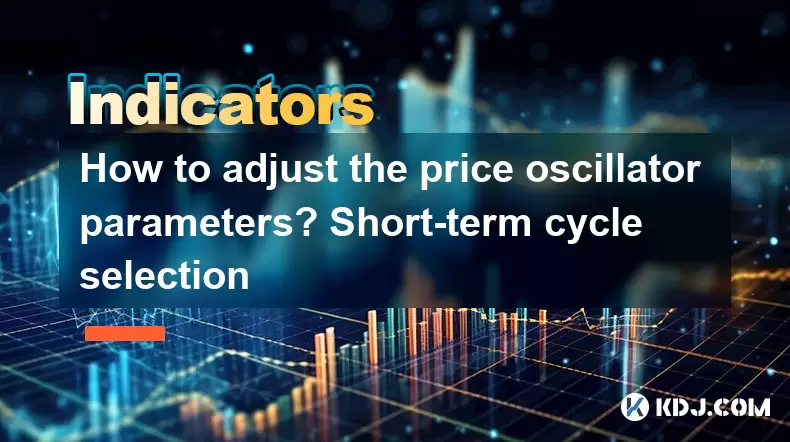
How to Adjust the Price Oscillator Parameters? Short-Term Cycle Selection
The price oscillator is a valuable tool for traders in the cryptocurrency market, helping them identify potential buy and sell signals by measuring the difference between two moving averages. Adjusting the parameters of a price oscillator, particularly for short-term cycles, can significantly impact its effectiveness. This article will guide you through the process of adjusting the price oscillator parameters for short-term cycle selection, ensuring you can optimize your trading strategy.
Understanding the Price Oscillator
Before diving into adjusting the parameters, it's essential to understand what a price oscillator is and how it functions. The price oscillator calculates the difference between two moving averages of a security's price. Typically, these are a fast moving average and a slow moving average. The difference is then plotted as a line or histogram, which oscillates around a zero line.
The fast moving average typically covers a shorter period, making it more sensitive to recent price changes. The slow moving average covers a longer period, smoothing out short-term fluctuations. The difference between these two averages can help traders identify trends and potential reversal points.
Selecting Short-Term Cycles
When focusing on short-term cycles, traders aim to capture quick price movements and capitalize on short-lived trends. The key to adjusting the price oscillator for short-term cycles lies in selecting the appropriate periods for the fast and slow moving averages.
For short-term trading, the fast moving average period should be relatively short, often ranging from 5 to 20 periods. The slow moving average period should be longer but still within the short-term range, typically between 10 to 50 periods. The exact numbers can vary based on the specific cryptocurrency and market conditions.
Adjusting the Fast Moving Average
To adjust the fast moving average for short-term cycles, follow these steps:
- Open your trading platform and navigate to the chart of the cryptocurrency you are analyzing.
- Select the price oscillator indicator from the list of available technical indicators.
- Locate the settings for the fast moving average. This is usually labeled as "Fast MA Period" or something similar.
- Enter a value between 5 and 20. For example, if you want to be more responsive to recent price changes, you might choose 5. If you want a bit more stability, you might choose 10 or 15.
- Apply the changes and observe how the oscillator reacts to the new setting.
Adjusting the Slow Moving Average
Adjusting the slow moving average involves similar steps:
- Navigate to the settings for the slow moving average. This is typically labeled as "Slow MA Period".
- Enter a value between 10 and 50. For a more sensitive oscillator, you might choose 10. For a smoother oscillator, you might choose 30 or 40.
- Apply the changes and monitor the oscillator's behavior on the chart.
Fine-Tuning the Oscillator
After setting the initial periods for the fast and slow moving averages, you may need to fine-tune the oscillator to better suit your trading style and the specific cryptocurrency you are trading. Here are some tips for fine-tuning:
- Experiment with different combinations of fast and slow moving average periods. For example, try a fast MA of 5 and a slow MA of 10, then adjust to a fast MA of 10 and a slow MA of 20, and observe the differences.
- Monitor the oscillator's sensitivity. If the oscillator is too sensitive and generates too many false signals, increase the slow MA period. If it's not sensitive enough, decrease the slow MA period or increase the fast MA period.
- Use historical data to backtest your settings. Many trading platforms allow you to apply the oscillator to historical data and see how it would have performed with different settings.
Interpreting the Price Oscillator
Once you have adjusted the price oscillator parameters for short-term cycles, it's crucial to understand how to interpret the signals it provides. Here are some key points to consider:
- Crossovers: When the price oscillator crosses above the zero line, it can signal a potential buy opportunity, indicating that the short-term trend is turning bullish. Conversely, when it crosses below the zero line, it can signal a potential sell opportunity, indicating a bearish turn.
- Divergence: If the price of the cryptocurrency is making new highs while the oscillator is not, this can signal a bearish divergence and a potential reversal. Similarly, if the price is making new lows while the oscillator is not, this can signal a bullish divergence.
- Overbought and Oversold Conditions: Some traders use the price oscillator to identify overbought and oversold conditions. If the oscillator reaches extreme highs, it may indicate overbought conditions, suggesting a potential sell. If it reaches extreme lows, it may indicate oversold conditions, suggesting a potential buy.
Applying the Price Oscillator in Trading
To effectively apply the price oscillator in your trading strategy, consider the following steps:
- Combine with other indicators: The price oscillator can be more effective when used in conjunction with other technical indicators, such as the Relative Strength Index (RSI) or Moving Average Convergence Divergence (MACD).
- Set clear entry and exit rules: Based on your analysis of the oscillator, set specific rules for entering and exiting trades. For example, you might enter a long position when the oscillator crosses above the zero line and exit when it crosses back below.
- Manage risk: Always use stop-loss orders to manage your risk. The price oscillator can help you identify potential entry points, but it's crucial to protect your capital with appropriate risk management strategies.
Frequently Asked Questions
Q: Can the price oscillator be used for long-term trading as well?
A: Yes, the price oscillator can be adapted for long-term trading by adjusting the periods of the fast and slow moving averages to longer time frames. For example, you might use a fast MA of 50 periods and a slow MA of 200 periods to capture longer-term trends.
Q: How often should I adjust the price oscillator parameters?
A: The frequency of adjusting the price oscillator parameters depends on your trading style and the market conditions. Some traders may adjust them daily, while others might do so weekly or monthly. It's important to monitor the oscillator's performance and adjust as needed to maintain its effectiveness.
Q: Is the price oscillator suitable for all cryptocurrencies?
A: The price oscillator can be used for all cryptocurrencies, but its effectiveness may vary depending on the specific market dynamics of each cryptocurrency. Highly volatile cryptocurrencies might require more frequent adjustments to the oscillator parameters, while more stable ones might work well with less frequent changes.
Q: Can the price oscillator be used in conjunction with fundamental analysis?
A: Yes, the price oscillator can complement fundamental analysis by providing technical insights into potential entry and exit points. While fundamental analysis helps you understand the underlying value and potential of a cryptocurrency, the price oscillator can help you time your trades more effectively.
Disclaimer:info@kdj.com
The information provided is not trading advice. kdj.com does not assume any responsibility for any investments made based on the information provided in this article. Cryptocurrencies are highly volatile and it is highly recommended that you invest with caution after thorough research!
If you believe that the content used on this website infringes your copyright, please contact us immediately (info@kdj.com) and we will delete it promptly.
- Decentralized Data: Taking the Driver's Seat in the Data Economy
- 2025-08-09 14:30:11
- Bitcoin vs. Gold: The Store-of-Value Showdown in the Digital Age
- 2025-08-09 14:30:11
- BlockDAG, Stellar, and Crypto Adoption: Navigating the Hype
- 2025-08-09 14:50:12
- Litecoin Price Surge: Riding the Wave of Institutional Interest and ETF Hopes
- 2025-08-09 14:50:12
- Chainlink's Wild Ride: Whales Are Still Loading Up on LINK!
- 2025-08-09 15:10:11
- Ruvi AI: Solana's New Challenger Dominating Token Sales with AI Innovation
- 2025-08-09 14:55:15
Related knowledge

What does it mean when the Triple Moving Average (TRIX) turns downward but the price doesn't fall?
Aug 09,2025 at 12:42pm
Understanding the Triple Moving Average (TRIX) IndicatorThe Triple Moving Average, commonly known as TRIX, is a momentum oscillator designed to filter...

What does it mean when the Williams' oscillator repeatedly hits bottoms but fails to rebound?
Aug 09,2025 at 09:28am
Understanding the Williams %R OscillatorThe Williams %R oscillator, developed by Larry Williams, is a momentum indicator used in technical analysis to...
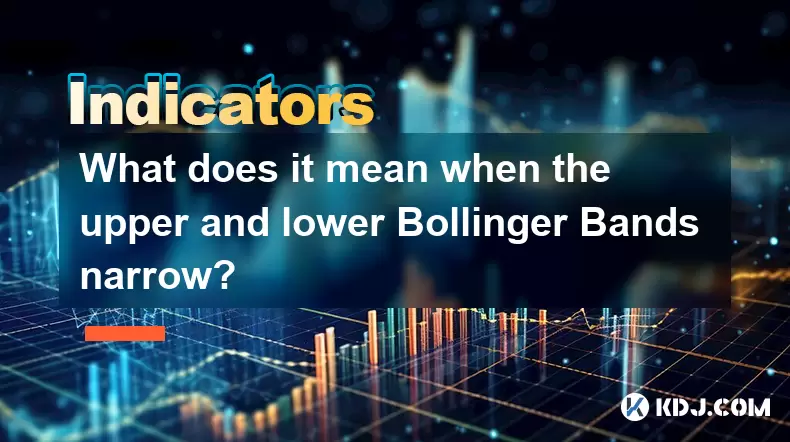
What does it mean when the upper and lower Bollinger Bands narrow?
Aug 09,2025 at 03:00pm
Understanding Bollinger Bands in Cryptocurrency TradingBollinger Bands are a widely used technical analysis tool in the cryptocurrency market, develop...
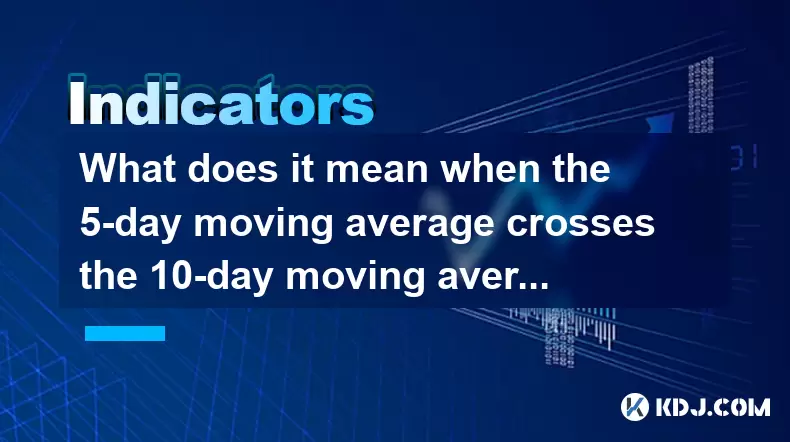
What does it mean when the 5-day moving average crosses the 10-day moving average but the 20-day moving average remains upward?
Aug 09,2025 at 03:35pm
Understanding Moving Averages in Cryptocurrency TradingMoving averages are foundational tools in technical analysis, especially within the cryptocurre...
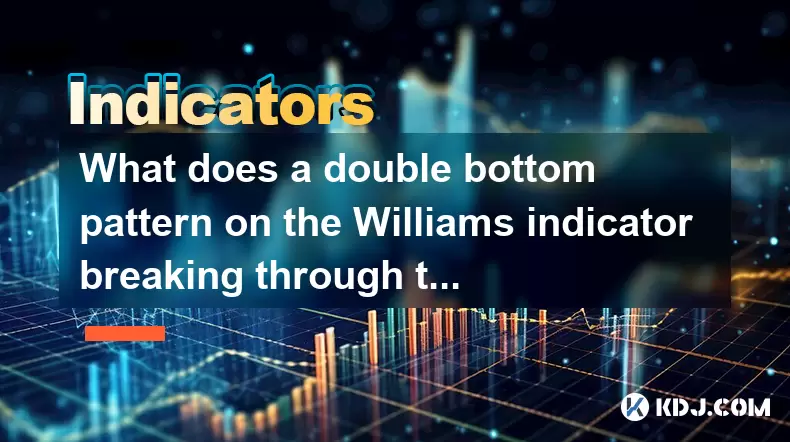
What does a double bottom pattern on the Williams indicator breaking through the 50-day midline indicate?
Aug 09,2025 at 10:56am
Understanding the Williams %R IndicatorThe Williams %R indicator, developed by Larry Williams, is a momentum oscillator that measures overbought and o...
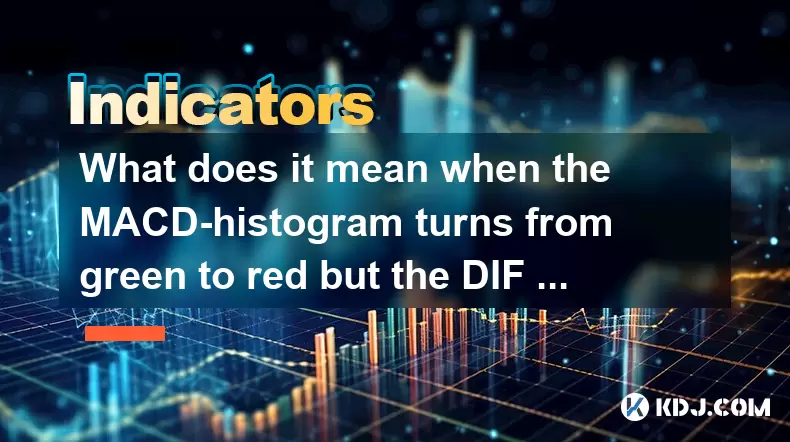
What does it mean when the MACD-histogram turns from green to red but the DIF line fails to form a golden cross?
Aug 09,2025 at 10:15am
Understanding the MACD and Its ComponentsThe MACD (Moving Average Convergence Divergence) is a widely used technical analysis tool in the cryptocurren...

What does it mean when the Triple Moving Average (TRIX) turns downward but the price doesn't fall?
Aug 09,2025 at 12:42pm
Understanding the Triple Moving Average (TRIX) IndicatorThe Triple Moving Average, commonly known as TRIX, is a momentum oscillator designed to filter...

What does it mean when the Williams' oscillator repeatedly hits bottoms but fails to rebound?
Aug 09,2025 at 09:28am
Understanding the Williams %R OscillatorThe Williams %R oscillator, developed by Larry Williams, is a momentum indicator used in technical analysis to...

What does it mean when the upper and lower Bollinger Bands narrow?
Aug 09,2025 at 03:00pm
Understanding Bollinger Bands in Cryptocurrency TradingBollinger Bands are a widely used technical analysis tool in the cryptocurrency market, develop...

What does it mean when the 5-day moving average crosses the 10-day moving average but the 20-day moving average remains upward?
Aug 09,2025 at 03:35pm
Understanding Moving Averages in Cryptocurrency TradingMoving averages are foundational tools in technical analysis, especially within the cryptocurre...

What does a double bottom pattern on the Williams indicator breaking through the 50-day midline indicate?
Aug 09,2025 at 10:56am
Understanding the Williams %R IndicatorThe Williams %R indicator, developed by Larry Williams, is a momentum oscillator that measures overbought and o...

What does it mean when the MACD-histogram turns from green to red but the DIF line fails to form a golden cross?
Aug 09,2025 at 10:15am
Understanding the MACD and Its ComponentsThe MACD (Moving Average Convergence Divergence) is a widely used technical analysis tool in the cryptocurren...
See all articles

























































































